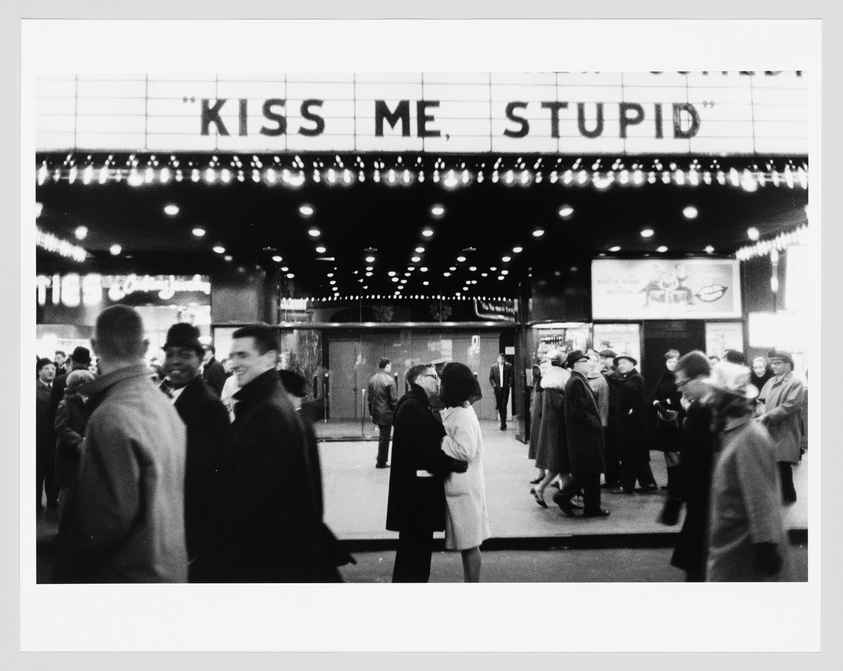Bruce Conner
1933–2008
Bruce Conner emerged in the late 1950s as a central figure in the San Francisco Renaissance, a loose association of artists, poets, musicians, and filmmakers who, resisting conformity in both art and life and juxtaposing beauty and ugliness in their work, articulated the cultural and political upheavals of their time. Conner’s experimental attitude took a multiplicity of forms, including collage, painting, sculpture, drawing, printmaking, film, and photography. He gained early acclaim for a series of moody, ethereal assemblages that utilized a variety of found objects and scrap materials to form complex meditations on contemporary life.
PORTRAIT OF ALLEN GINSBERG is an unconventional, abstract depiction of the poet that shuns any overtly formal or symbolic references, achieving instead, in Conner’s words, “a drama of a characterization.” Combining a door or window frame with dangling biomorphic forms (nylon stockings filled with found objects), sinewy stretched fabric, and partially burnt candles, it connotes a state of decay, a forensic scene, or an occult ritual. Equally renowned for his films, Conner originated an influential form of film collage through the meticulous assemblage of found footage—newsreels, countdown leader, film company logos, hand-altered film frames (hole punched, bleached, ink marked)—and his own original material. From the beginning he imagined the possibility of an infinitely looping, multiple projection film environment, and in 1965 he reworked his film COSMIC RAY (1961) into a three-screen 8mm film installation for exhibition at the Rose Art Museum at Brandeis University. Near the end of his life he revisited this work and, with the advance of digital projection, finally realized his vision for an infinite duration, multiscreen work, using this and earlier film materials to create EYE-RAY-FOREVER.
Introduction
Bruce Conner (November 18, 1933 – July 7, 2008) was an American artist who worked with assemblage, film, drawing, sculpture, painting, collage, and photography.
Wikidata identifier
Q991589
Information from Wikipedia, made available under the Creative Commons Attribution-ShareAlike License . Accessed November 26, 2025.
Introduction
American artist active in San Francisco was first known for his assemblages made of discarded and seemingly decaying objects. He studied at Wichita University and the University of Nebraska, Lincoln where he received a BFA 1956. He also studied at Brooklyn Art School, and the University of Colorado. He was a prolific filmmaker, and was a pioneer in the use of "found footage." Most of his films are constructed from images shot by others and cut to new soundtracks, including popular or underground music. His film "Crossroads" was made entirely with official footage shot of a hydrogen bomb test in the Bikini Atoll set to a soundtrack by Terry Riley. Many of his films are considered precursors to what would become the music video genre. In the 1960s, Conner began making highly detailed ink drawings, referred to as the Mandala Series. In the 1970s and 1980s, concurrent with his filmmaking, he would create two-dimensional collages from 18th and 19th century etchings. He created large-scale photograms of human figures, and a series of black and white photographs documenting underground music in San Francisco during the late 1970s. His later work often incorporated obsessively created inkblots on paper, made with an accordion fold technique.
Country of birth
United States
Roles
Artist, assemblage artist, cinematographer, collagist, mixed-media artist, painter, photographer, sculptor
ULAN identifier
500116235
Names
Bruce Conner, Bruce G. Conner, Bruce Guldner Conner, Emily Feather
Information from the Getty Research Institute's Union List of Artist Names ® (ULAN), made available under the ODC Attribution License. Accessed November 26, 2025.
















